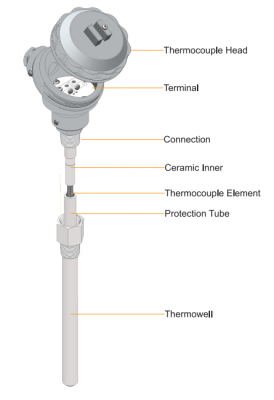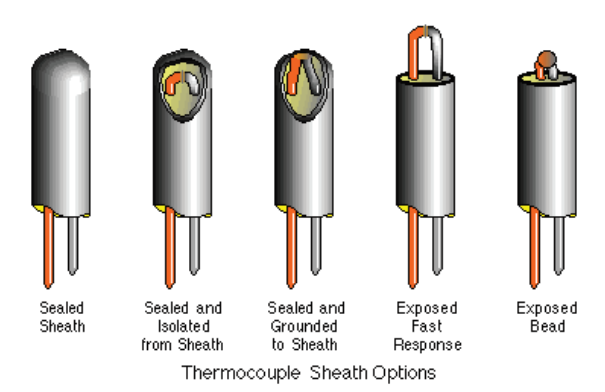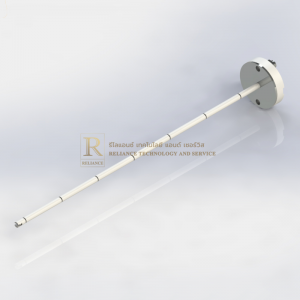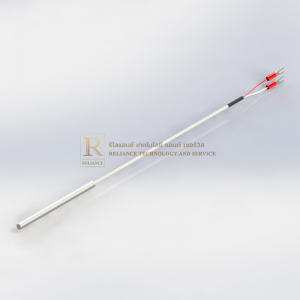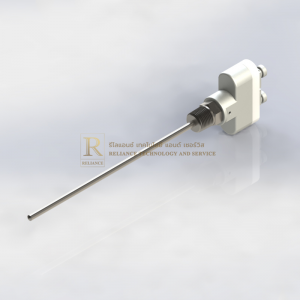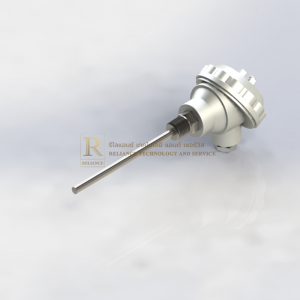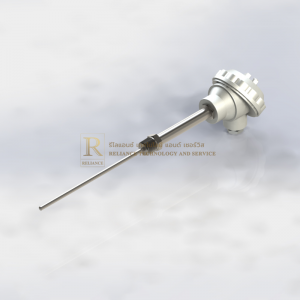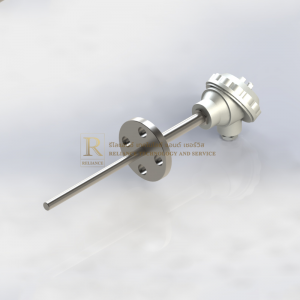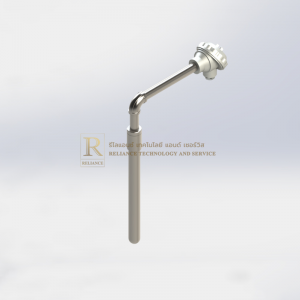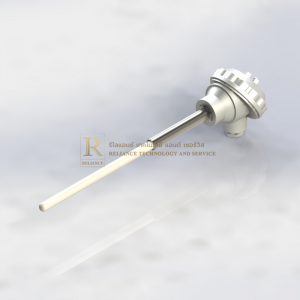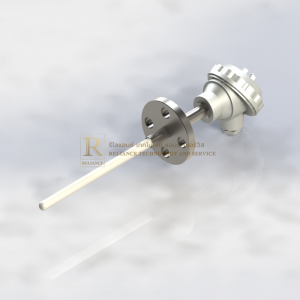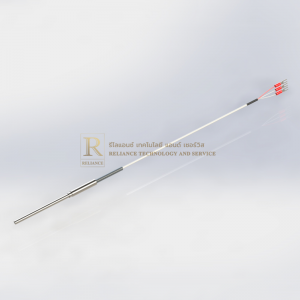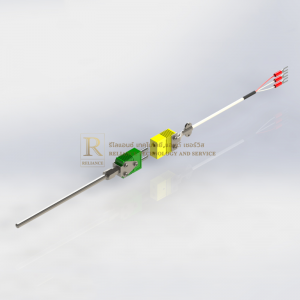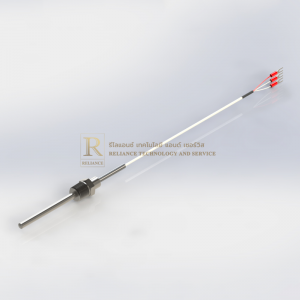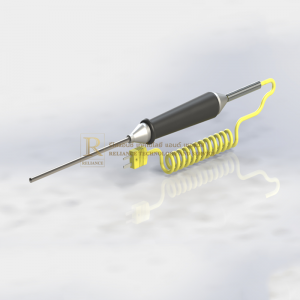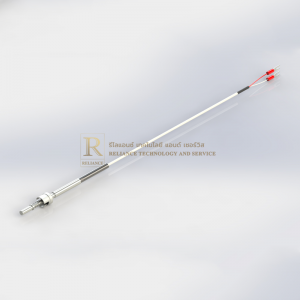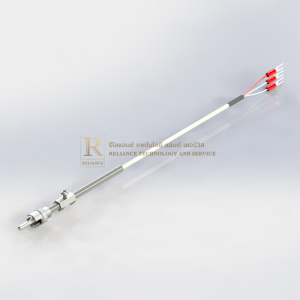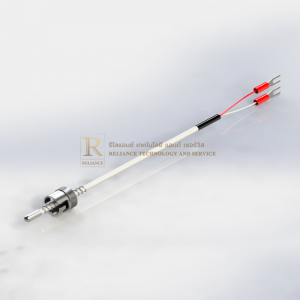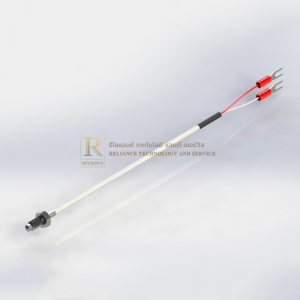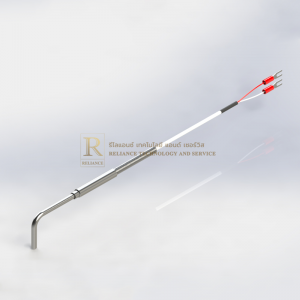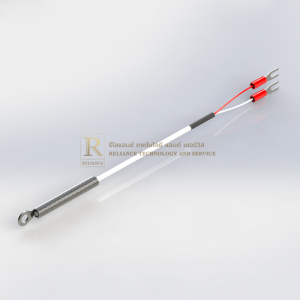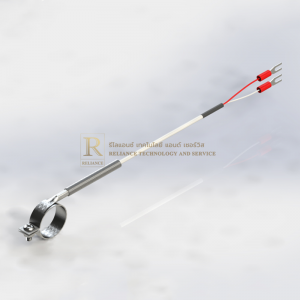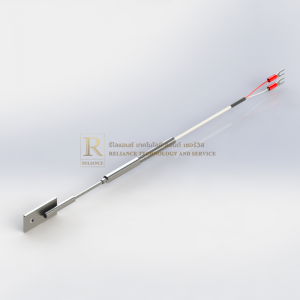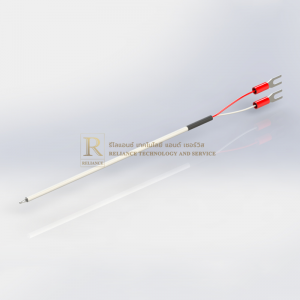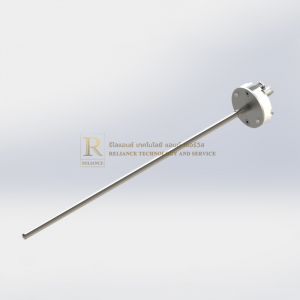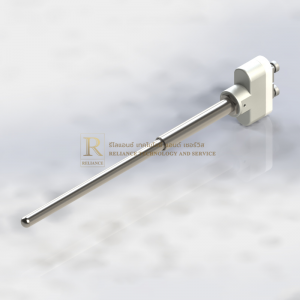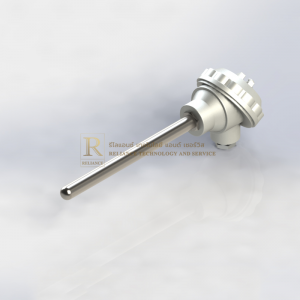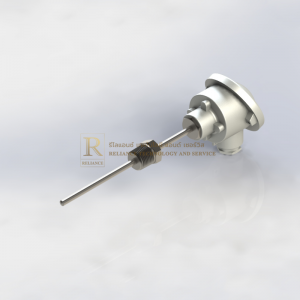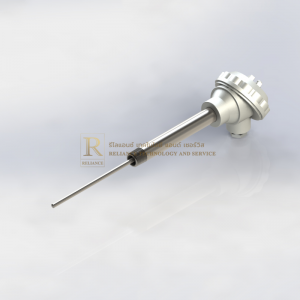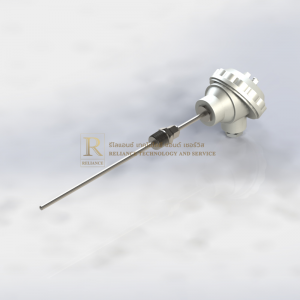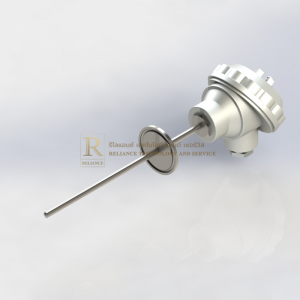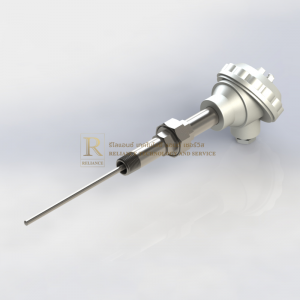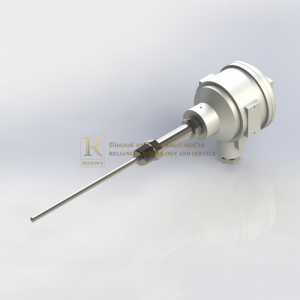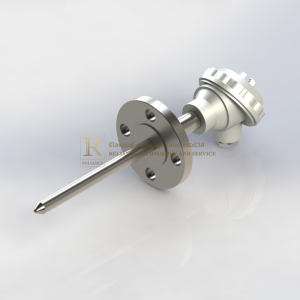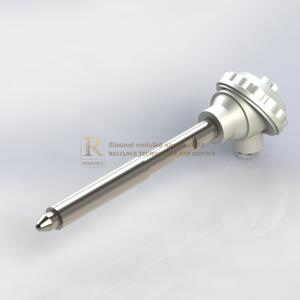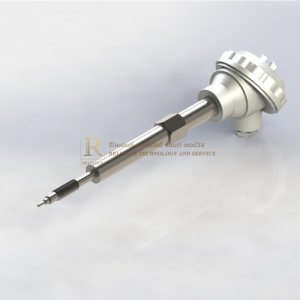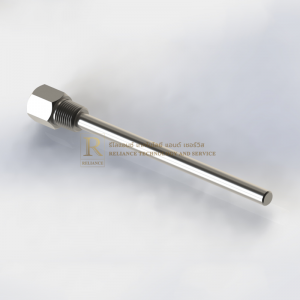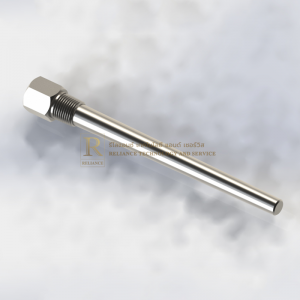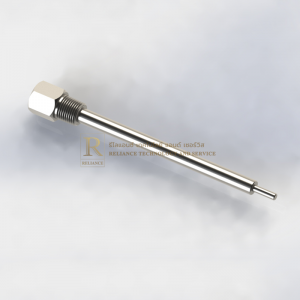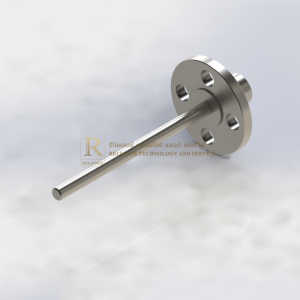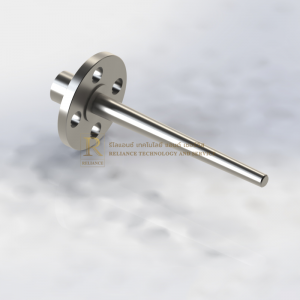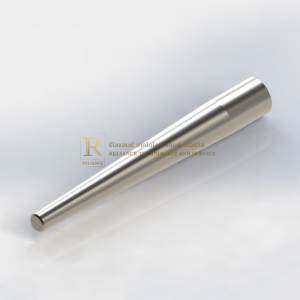THERMOCOUPLE
Thermocouple คือ อุปกรณ์วัดอุณหภูมิ หรือ เซ็นเซอร์สำหรับวัดอุณหภูมิ เป็นเครื่องมือเพื่อรับรู้หรือตรวจจับระดับอุณหภูมิ ซึ่งตัวเซ็นเซอร์สามารถนำมาใช้ในอุตสาหกรรมการผลิตต่างๆ ไม่ว่าจะเป็นอุตสาหกรรม เกษตรกรรม อาหาร เหล็ก พลาสติก แก้ว เคมีภัณฑ์ ปูนซีเมนต์ ปิโตรเคมี รถยนต์ และยารักษาโรค ซึ่งประเภทของเซ็นเซอร์อุณหภูมิและหลักการทำงานของ Temperature Sensor มีดังนี้
แบบ Contact คือ เป็นแบบที่ใช้ในการสัมผัสของตัวเซ็นเซอร์เพื่อวัดอุณหภูมิ เช่น เซ็นเซอร์ที่วัดอุณหภูมิเครื่องอบ เตาอบ เครื่องปรับอากาศ เครื่องฟักไข่ หรืออุตสาหกรรมทั่วไป จะใช้เซ็นเซอร์ชนิด เทอร์โมคัปเปิล(Thermocouple) และ อาร์ทีดี(RTD)
Thermocouple แบ่งออกเป็น
-
-
- ชนิดของหัววัด : B, R, S, K,E, J, T, N (Single & Double)
- ปลอกป้องกัน เทอร์โมคัปเปิล : SUS316L, 310S, INCONEL600, SUS253MA, 446, ท่อเซรามิก Silicon Nitride และ Silicon Carbide
- ขนาดเส้นผ่าศูนย์กลางท่อ : 1mm., 1.6mm., 2mm., 3.2mm., 4mm., 4.5mm., 4.8mm., 5mm., 6mm., 6.4mm., 8mm., 10mm., 12mm., 15mm., 15.8mm., 17mm., 21.3mm.
- ท่อ : SUS304, 316L, 310S, 253MA, INCONEL600, CAST IRON, HASTELLOY C22, MONEL 400
- ขนาดเส้นผ่าศูนย์กลางท่อ : 3mm. – 25mm.
-
การใช้งาน Thermocouple ควรเลือกใช้ให้ถูกต้องและเหมาะสมกับงานนั้นๆ โดยสิ่งที่ควรพิจารณามีหลายข้อ เช่น ค่าอุณหภูมิสูงสุดที่ใช้งาน, ราคา, ความกัดกร่อนของสารที่ Thermocouple สัมผัส, ต้องใช้ Thermowell หรือไม่, ลักษณะบรรยากาศที่เป็น Oxidizing. Reducing Inert หรือ Vacuum เป็นต้น
Thermocouples Construction A thermocouple consists of two wires, each made of a different metal, welded together at one end. When the welded point (measuring junction) is heated, a thermoelectromotive force is produced that is proportional to the temperature difference between the welded point and the other end (reference junction). Therefore, by measuring this thermoelectromotive force either with the reference junction temperature kept constant or by using an automatic compensation Circuit, the measuring junction temperature can be measured.
Thermocouple mounting
There are four common ways in which thermocouples are mounted with in a stainless steel or Inconel sheath and electrically insulated with mineral oxides. Each of the methods has its advantages and disadvantages.
Sealed and Isolated from Sheath: Good relatively trouble-free arrangement. The principal reason for not using this arrangement for all applications is its sluggish response time – the typical time constant is 75 seconds
Sealed and Grounded to Sheath: Can cause groud loops and other noise injection, but provides a reasonable time constant (40 seconds) and a sealed enclosure.
Exposed Bead: Faster response time constant (typically 15 seconds), but lacks mechanical and chemical protection, and electrical isolation from material being measured. The porous insulating mineral oxides must be sealed
Exposed Fast Response: Fastest response time constant, typically 2 seconds but with fine gauge of junction wire the time constant can be 10-100 ms. In addition to problems of the exposed bead type, the protruding and light construction makes the thermocouple more prone to physical damage.
TEMPERATURE
TEMPERATURE
TEMPERATURE
TEMPERATURE
TEMPERATURE
TEMPERATURE
TEMPERATURE
TEMPERATURE
TEMPERATURE
TEMPERATURE
TEMPERATURE
TEMPERATURE
TEMPERATURE
TEMPERATURE
TEMPERATURE
TEMPERATURE
TEMPERATURE
TEMPERATURE
TEMPERATURE
TEMPERATURE
TEMPERATURE
TEMPERATURE
TEMPERATURE
TEMPERATURE
TEMPERATURE
TEMPERATURE
TEMPERATURE
TEMPERATURE
TEMPERATURE
TEMPERATURE
TEMPERATURE
TEMPERATURE
TEMPERATURE
TEMPERATURE
TEMPERATURE
TEMPERATURE
TEMPERATURE
TEMPERATURE
TEMPERATURE
TEMPERATURE

